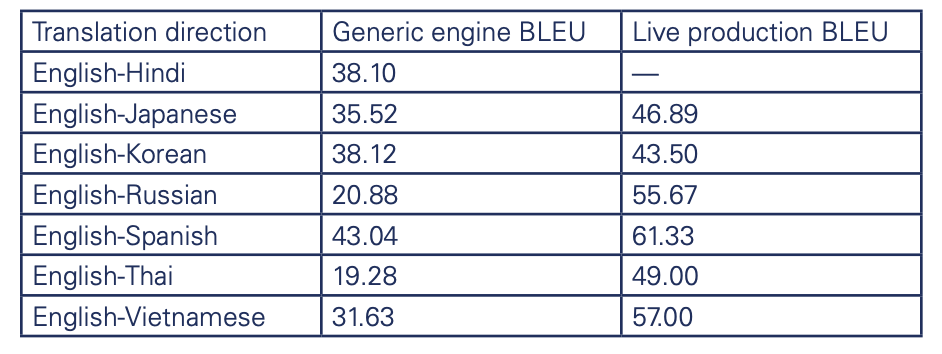Introduction
How Neural Machine Translation (NMT) engines can be customized to tackle large material volumes and client-specific corpora to increase quality while saving time and costs.
One of Propio’s largest clients needed a high volume of regulated material to be translated on a cyclical basis from English into seven languages, including: Hindi, Japanese, Korean, Russian, Spanish, Thai and Vietnamese.
The client required expedient turnaround and reliable, tested quality output to ensure the materials conveyed total accuracy for a multilingual audience.

The Challenge

The Solution
To create a customized engine a minimum amount of 15,000 clean segments is needed. Considering that Translation Memories (TMs) usually contain a significant amount of repetitions and segments that are just figures or unusable text, an amount of 30,000 segments from TMs are a good basis.
Propio’s NMT team followed the standard engine customization process:
- Identify and extract eligible existing training material
- Perform a corpora cleaning process utilizing proprietary and third-party technologies
- Generate an acceptable set of clean and usable aligned segments to train the customized engine

Proven Results
Propio tested the BLEU scores of the in-market engines against the NMT engine that was custom built for the client. The results of the comparison illustrate large quality disparity between in-market and custom NMT engines.
In the below, the Live Production BLEU was able to reach the following scores:
The increase of the BLEU score was significant and allowed Propio to elevate the more difficult languages such as Russian and Thai to an appropriate quality level to utilize in production.
In conjunction with the quality-tested results, the customized NMT engine delivered significant benefits to the client including reduced turnaround time, and more than 38 percent reduction in time to market and overall savings.









